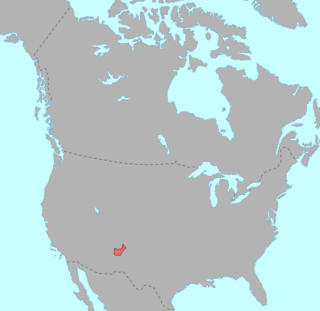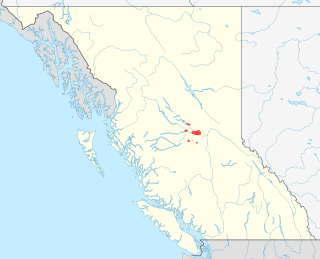Related Research Articles
Linguistics is the scientific study of human language. Someone who engages in this study is called a linguist. See also the Outline of linguistics, the List of phonetics topics, the List of linguists, and the List of cognitive science topics. Articles related to linguistics include:
Ubykh, an extinct Northwest Caucasian language, has the largest consonant inventory of all documented languages that do not use clicks, and also has the most disproportional ratio of phonemic consonants to vowels. It has consonants in at least eight, perhaps nine, basic places of articulation and 29 distinct fricatives, 27 sibilants, and 20 uvulars, more than any other documented language. Some Khoisan languages, such as ǃXóõ, may have larger consonant inventories due to their extensive use of click consonants, although some analyses view a large proportion of the clicks in these languages as clusters, which would bring them closer into line with the Caucasian languages.

Sandawe is a language spoken by about 60,000 Sandawe people in the Dodoma Region of Tanzania. Sandawe's use of click consonants, a rare feature shared with only two other languages of East Africa – Hadza and Dahalo, had been the basis of its classification as a member of the defunct Khoisan family of Southern Africa since Albert Drexel in the 1920s. Recent investigations however suggest that Sandawe may be related to the Khoe family regardless of the validity of Khoisan as a whole. A discussion of Sandawe's linguistic classification can be found in Sands (1998).
Consonant mutation is change in a consonant in a word according to its morphological or syntactic environment.

Keres, also Keresan, is a Native American language, spoken by the Keres Pueblo people in New Mexico. Depending on the analysis, Keres is considered a small language family or a language isolate with several dialects. The varieties of each of the seven Keres pueblos are mutually intelligible with its closest neighbors. There are significant differences between the Western and Eastern groups, which are sometimes counted as separate languages.
The Nandi language, or Kalenjin proper, are a dialect cluster of the Kalenjin branch of the Nilotic language family.

The Warlpiri language is spoken by close to 3,000 of the Warlpiri people from the Tanami Desert, northwest of Alice Springs, Central Australia. It is one of the Ngarrkic languages of the large Pama–Nyungan family and is one of the largest Aboriginal languages in Australia in terms of number of speakers. One of the most well-known terms for The Dreaming, Jukurrpa, derives from Warlpiri.

The Dakelh (ᑕᗸᒡ) or Carrier language is a Northern Athabaskan language. It is named after the Dakelh people, a First Nations people of the Central Interior of British Columbia, Canada, for whom Carrier has been a common English name derived from French explorers naming of the people. Dakelh people speak two related languages. One, Babine-Witsuwit'en is sometimes referred to as Northern Carrier. The other includes what are sometimes referred to as Central Carrier and Southern Carrier.
The phonology of the Persian language varies between regional dialects, standard varieties, and even from older variates of Persian. Persian is a pluricentric language and countries with that have Persian as an official language have separate standard varieties; namely, Standard Dari (Afghanistan), Standard Iranian Persian (Iran) and Standard Tajik (Tajikistan). The standard varieties of Persian have differing vowel systems, ranging from 6 distinct vowels distinctions to 8. However, all standards have 26 distinguished consonants, though they may not all be pronounced in colloquial speech. Most dialects feature contrastive stress and syllable-final consonant clusters.
The Sikkimese language, also called Sikkimese, Bhutia, or Drenjongké, Dranjoke, Denjongka, Denzongpeke and Denzongke, belongs to the Tibeto-Burman languages. It is spoken by the Bhutia in Sikkim, India and in parts of Province No. 1, Nepal. The Sikkimese people refer to their own language as Drendzongké and their homeland as Drendzong. Up until 1975 Sikkimese did not have a written language. After gaining Indian Statehood the language was introduced as a school subject in Sikkim and the written language was developed.
The grammar of Ukrainian describes its phonological, morphological, and syntactic rules. Ukrainian has seven cases and two numbers for its nominal declension and two aspects, three tenses, three moods, and two voices for its verbal conjugation. Adjectives agree in number, gender, and case with their nouns.
Murrinh-patha, called Garama by the Jaminjung, is an Australian Aboriginal language spoken by over 2,000 people, most of whom live in Wadeye in the Northern Territory, where it is the dominant language of the community. It is spoken by the Murrinh-Patha people, as well as several other peoples whose languages are extinct or nearly so, including the Mati Ke and Marri-Djabin. It is believed to be the most widely spoken Australian Aboriginal language not belonging to the Pama-Nyungan language family.
Pohnpeian is a Micronesian language spoken as the indigenous language of the island of Pohnpei in the Caroline Islands. Pohnpeian has approximately 30,000 (estimated) native speakers living in Pohnpei and its outlying atolls and islands with another 10,000-15,000 (estimated) living off island in parts of the US mainland, Hawaii and Guam. It is the second-most widely spoken native language of the Federated States of Micronesia.
The phonology of Sesotho and those of the other Sotho–Tswana languages are radically different from those of "older" or more "stereotypical" Bantu languages. Modern Sesotho in particular has very mixed origins inheriting many words and idioms from non-Sotho–Tswana languages.
Izi is an Igboid language spoken in Ebonyi state in Nigeria. It forms a dialect cluster with the closely related languages Ikwo, Ezza, and Mgbo.
Warndarrang (waɳʈaraŋ), also spelt Warndarang, Wanderang, Wandaran, and other variants is an extinct Aboriginal Australian language in the Arnhem family, formerly spoken by the Warndarrang people in southern Arnhem Land, along the Gulf of Carpentaria. The last speaker was Isaac Joshua, who died in 1974, while working with the linguist Jeffrey Heath.

Ute is a dialect of the Colorado River Numic language, spoken by the Ute people. Speakers primarily live on three reservations: Uintah-Ouray in northeastern Utah, Southern Ute in southwestern Colorado, and Ute Mountain in southwestern Colorado and southeastern Utah. Ute is part of the Numic branch of the Uto-Aztecan language family. Other dialects in this dialect chain are Chemehuevi and Southern Paiute. As of 2010, there were 1,640 speakers combined of all three dialects Colorado River Numic. Ute's parent language, Colorado River Numic, is classified as a threatened language, although there are tribally-sponsored language revitalization programs for the dialect.
Muna is an Austronesian language spoken principally on the island of Muna as well as North-west Buton Island, off the southeast coast of Sulawesi in Indonesia. the island of Tobea Besar. The language is well-documented, especially by linguist René van den Berg. In 2010, the language had around 270,000 speakers.
Avava (Navava), also known as Katbol, Tembimbe-Katbol, or Bangsa’ is an Oceanic language of central Malekula, Vanuatu. It has nasalized fricatives and a bilabial trill.
Neve’ei, also known as Vinmavis, is an Oceanic language of central Malekula, Vanuatu. There are around 500 primary speakers of Neve’ei and about 750 speakers in total.
References
- 1 2 Olo at Ethnologue (25th ed., 2022)

- ↑ Staley, William (1995). Referent management in Olo: a cognitive perspective. OCLC 896393831.
- ↑ Foley, William A. (2018). "The Languages of the Sepik-Ramu Basin and Environs". In Palmer, Bill (ed.). The Languages and Linguistics of the New Guinea Area: A Comprehensive Guide. The World of Linguistics. Vol. 4. Berlin: De Gruyter Mouton. pp. 197–432. ISBN 978-3-11-028642-7.
- ↑ "Type IPA phonetic symbols - online keyboard". ipa.typeit.org. Retrieved 2019-10-08.
- ↑ McGregor, Donald E. (1982). Olo language materials . McGregor, Aileen R. F. Canberra, A.C.T., Australia: Dept. of Linguistics, Research School of Pacific Studies, Australian National University. ISBN 0858832623. OCLC 10825288.